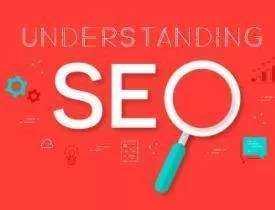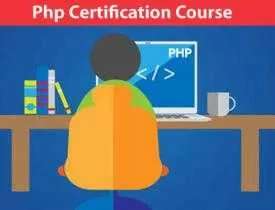Description
Course Name: Advance Diploma in Computer Applications(ADCA)
Course Id: ADCA/Q0001.
Education Qualification: 10th Class.
Duration: 370 Hrs.
ADCA Syllabus
- Communicative English & Fundamental of Computer
- Operating System
- Internet & Web Designing
- Multimedia with Coreldraw
- Data Base Management System
- Object Oriented Programming & C
How You will Get Diploma Certificate:
Step 1- Select your Course for Certification.
Step 2- Click on Enroll Now.
Step 3- Proceed to Enroll Now.
Step 4- Fill Your Billing Details and Proceed to Pay.
Step 5- You Will be Redirected to Payment Gateway, Pay Course and Exam Fee by Following Options.
Card(Debit/Credit), Wallet, Paytm, Net banking, UPI and Google pay.
Step 6- After Payment You will receive Study Material on your email id.
Step 7- After Completion of Course Study give Online Examination.
Step 8- After Online Examination you will get Diploma Certificate soft copy(Scan Copy) and Hard Copy(Original With Seal and Sign).
Step 9- After Certification you will receive Prospect Job Opportunities as per your Interest Area.
Online Examination Detail:
- Duration- 120 minutes.
- No. of Questions- 60. (Multiple Choice Questions).
- 10 Questions from each module, each carry 10 marks.
- Maximum Marks- 600, Passing Marks- 40%.
- There is no negative marking in this module.
| How Students will be Graded: | ||
| S.No. | Marks | Grade |
| 1 | 91-100 | O (Outstanding) |
| 2 | 81-90 | A (Excellent) |
| 3 | 71-80 | A (Very Good) |
| 4 | 61-70 | B (Good) |
| 5 | 51-60 | C (Average) |
| 6 | 41-50 | P (Pass) |
| 7 | 0-40 | F (Fail) |
Benefits of Certification:
- Government Authorized Assessment Agency Certification.
- Certificate Valid for Lifetime.
- Lifetime Verification of Certificate.
- Free Job Assistance as per your Interest Area.
SYLLABUS
ADVANCE DIPLOMA IN COMPUTER APPLICATION (ADCA)
Communicative English and Fundamental of Computer
Communication – communication Process – verbal communication – Non – Verbal Communication – Pros & Cons of Communication – communicative English Exercises. Communicative grammar – Classification of Nouns and Their functions – Verbs – Symbols – Pronouns – Auxiliary Verbs – Articles – Use of the indefinite article – Use of the definite article – Tenses – Prepositions – Phrasal verbs and adverb particles – Verbs Patterns and structures. Windows Introduction – Operating System – Desk Top Icons – My Computer, Recycle Bin, Internet Explorer, Network Neighborhood, and My documents. Working with Windows – How to create a Folder, Copying and cutting files, Renaming – Start Icon – Programs, Favorites, Documents, Settings, Find, Run, Shutdown – Application Icons. Basics of Ms Office Tools, Ms Office Access, Ms Office Groove, Ms office one note, Ms Office outlook, Ms Office power point. An Introduction to Word – The word workspace, starting and quitting Word, Creating and Manipulating various documents, Editing of proofing files, merging documents and macros. -How to use Mouse and Menu – Working with dialog box – Primary Commands in File Menu – The Open commands, The File name commands – The New Commands, The Save, Save As, and Save all commands, The Close command, The page setup, The Print commands, The exit commands.
Operating System
Evolution of Operating Systems: Types of operating systems – Different views of the operating systems – Principles of Design and Implementation. The process concept – system programmer’s view of processes – operating system’s views of processes – operating system services for process management. Process scheduling – Schedulers – Scheduling Algorithms. Memory Management paging, virtual memory management, Contiguous allocation – static, dynamic partitioned memory allocation – segmentation. Non-contiguous allocation – paging – Hardware support – Virtual Memory, Dynamic Resource Allocation. Structural overview, Concept of process and Process synchronization, Process Management and Scheduling, Hardware requirements: protection, context switching, privileged mode; Threads and their Management; Tools and Constructs for Concurrency, Detection and Prevention of deadlocks, Mutual Exclusion: Algorithms, semaphores – concurrent programming using semaphores.
Internet and Web Designing
Introduction to Internet – internet Evolution and Concepts, Internet vs. Intranet, Growth of Internet, Internet Service Provider and Its Function, Connectivity – Dialup, Leased Line, VSAT, URLs, portals, Internet Services, Application. HTML – Concepts of Hypertext, Versions of HTML, Elements of HTML, Syntax, Tags and Attributes, Head and Body Sections, Building, HTML Documents. Inserting Texts, Images, Hyperlink, Backgrounds and color controls Different HTML Tags, Table Layout and Presentation, Creating Lists, Use of Font Size and Attributes, Lists Type and Its Tags.
Introduction to WYSIWG HTML editor, advantages of using HTML editors, creating a new page and site, Inserting and formatting text, Creating and Inserting Images. Word Press – What is Word Press, Installation, Login, Overview of admin panel, user profile, Word Press Themes, Themes depository, Create and Add New Logo, set up a static homepage.
Multimedia with Corel Draw
Introduction to Corel, Usage and Advantages, Introduction to User Interface,
Introduction to tool panel and workspaces, Introduction to various size and formats of Panels and layouts, and layout properties, Objects and using color profiles. Text tool and text properties, Creating Vector graphics by using editing tools, creating shapes and editing Shapes, drawing curves and editing curves, creating special text effects, creating Special object effects, Using color effects. Sound Forge: Introduction, interface, Editing Toolbar, Transport toolbar, Opening New file, playing a file, playing file form specific point, playing a selection Basic Sound, Editing: copying, pasting, Cutting Deleting, Cropping, Mixing, Recoding Audio Normalizing, Using Markers, Noise Reduction. Toolbar description: Selection Tool, Track select Forward Tool, Track Select Backward Tool Ripple Edit Tool, Rolling Edit Tool, Razor tool, Slip tool, Slide Tool, Pen Tool, Hand Tool, Zoom Tool.
Database management System
Introduction to Databases and Transactions: What is database system, purpose of database system, view of data, relational databases, database architecture, transaction management, the importance of data models, Basic building blocks, Business rules, the evolution of data models, Degrees of data abstraction. Database design and ER Model: overview, ER-Model, Constraints, ER-Diagrams, ERD Issues, weak entity sets, Cod’s rules, Relational Schemas, Introduction to UML, Relational algebra: introduction, Selection and projection, set operations, renaming, Joins, Division, syntax, semantics. Operators, grouping and ungrouping, relational comparison, Calculus: Tuple relational calculus, Domain relational Calculus, calculus vs algebra, computational capabilities.
Constraints, Views and SQL: What are constraints, types of constrains, Integrity constraints, Views: Introduction to views, data independence, security, updates on views, comparison between tables and views, SQL: data definition, aggregate function, Null Values, nested sub queries, Joined relations.
Object Oriented Programming and C
Introduction to object oriented programming, user defined types, structures, unions, polymorphism, and encapsulation. Getting started with C syntax, data-type, variables, strings, functions, and default values in functions, recursion, namespaces, operators, flow control, arrays and pointers. Abstraction mechanism: Classes, private, public, constructors, destructors, member data, member functions, inline function, friend functions, static members, and references. Inheritance: Class hierarchy, derived classes, single inheritance, multiple, multilevel, hybrid inheritance.
Operator Overloading: This pointer, applications of this pointer, Operator function, member and non member operator function, operator overloading, I/O operators. Exception handling: Try, throw, and catch, exceptions and derived classes, function exception declaration, unexpected exceptions, exception when handling exceptions, resource capture and release. Template: template classes, template functions.






